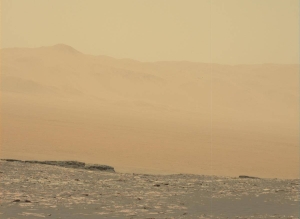NASA is considering changing the first Orion crewed mission so that, instead of orbiting the Moon, the spacecraft will merely whip past it on a course that will take it directly back to Earth.
In a presentation to a Nov. 30 meeting of the NASA Advisory Council in Palmdale, California, Bill Gerstenmaier, NASA associate administrator for human exploration and operations, discussed what he described as a new proposal for Exploration Mission 2 (EM-2) that would last eight days. The concept, called the multi-translunar injection free minimum mission, would initially place the Orion spacecraft and its Exploration Upper Stage (EUS) into an elliptical orbit around the Earth with an apogee of 35,000 kilometers. After spending one day in that orbit, the spacecraft would separate from the EUS and use its service module engine for a final burn to send the spacecraft towards the moon. Orion would fly on a “free return” trajectory around the moon without going into orbit and without requiring another engine burn. The mission would end with a return to Earth eight days after launch, but with an option to extend the mission to up to 21 days.
The entire SLS/Orion project is idiotic and incredibly dangerous, not because it is going to the Moon but in how they plan on doing it, with literally no preparation flights beforehand. With Apollo, NASA was very careful to test each part of the package first, then proceed with a more ambitious mission. The only exception to this process was Apollo 8, which went to the Moon without a Lunar Module. That happened because they were in an intense space race with the Soviets and were under pressure to achieve Kennedy’s commitment to land before the end of the decade.
With SLS/Orion there is no such pressure. What is driving their lack of testing is a lack of money, caused by the project’s ungodly cost. They not only can’t afford to build multiple rockets to fly a variety of missions building up to the Moon, Congress hasn’t given them the money. Right now all they have allocated is enough to fly one unmanned mission in 2018, and this one manned flight in 2021 (which by the way is almost certainly going to be delayed until 2023).
The worst aspect of SLS/Orion is its stuntlike nature. They aren’t building anything that will have any permanence or allow for future colonization. It costs too much. Instead, SLS/Orion is designed to do one or two PR missions that will look good on some politician’s resume, but will do little to further the colonization of the solar system by the U.S.



